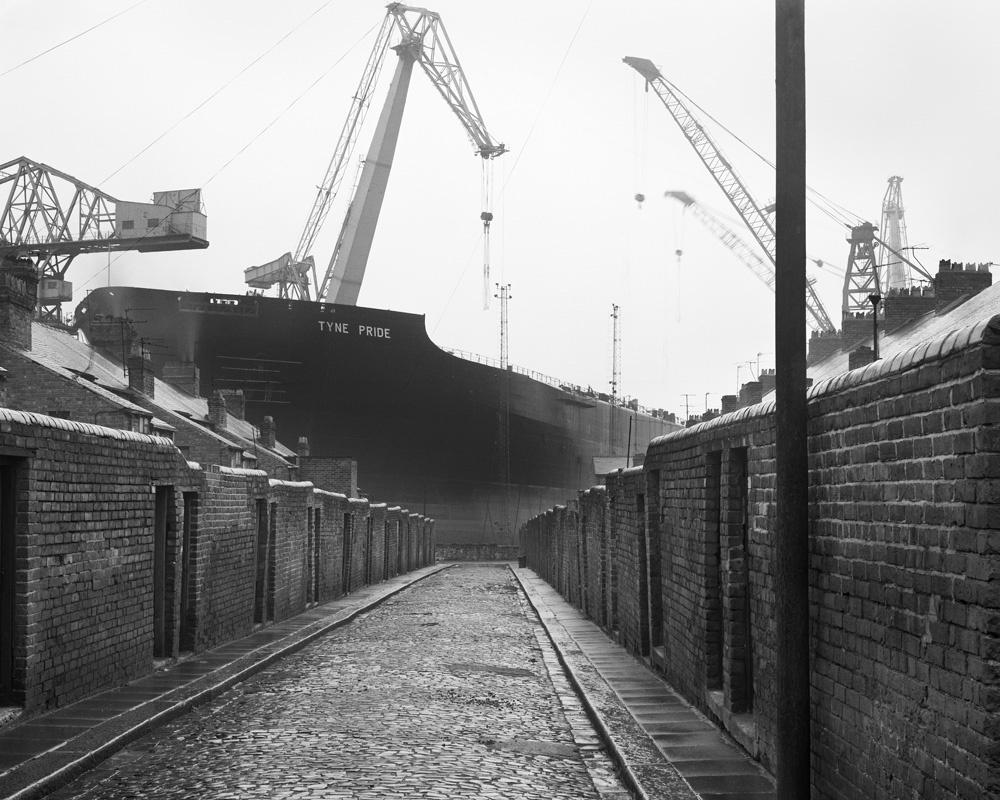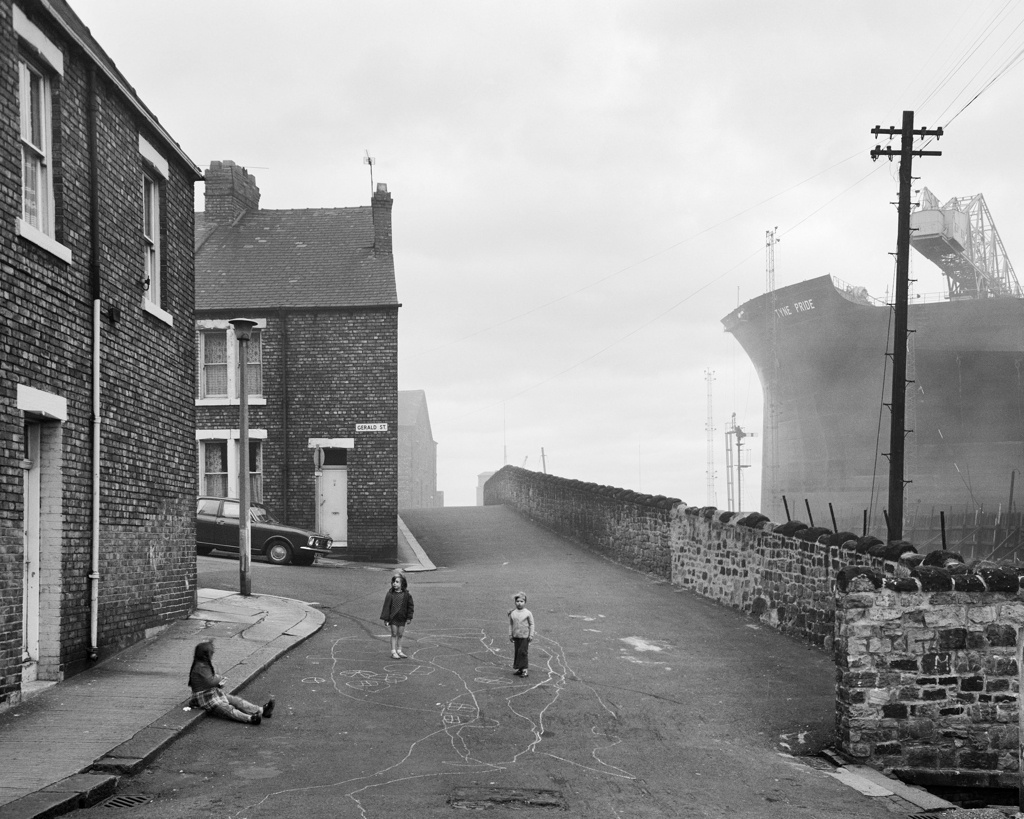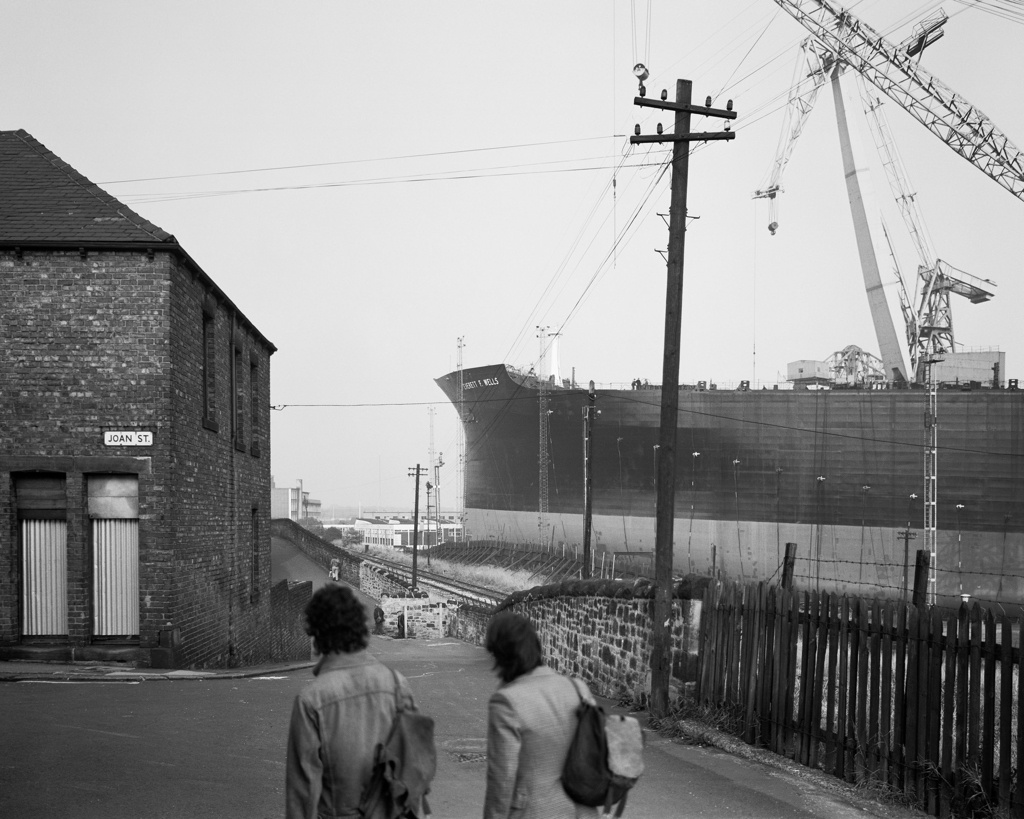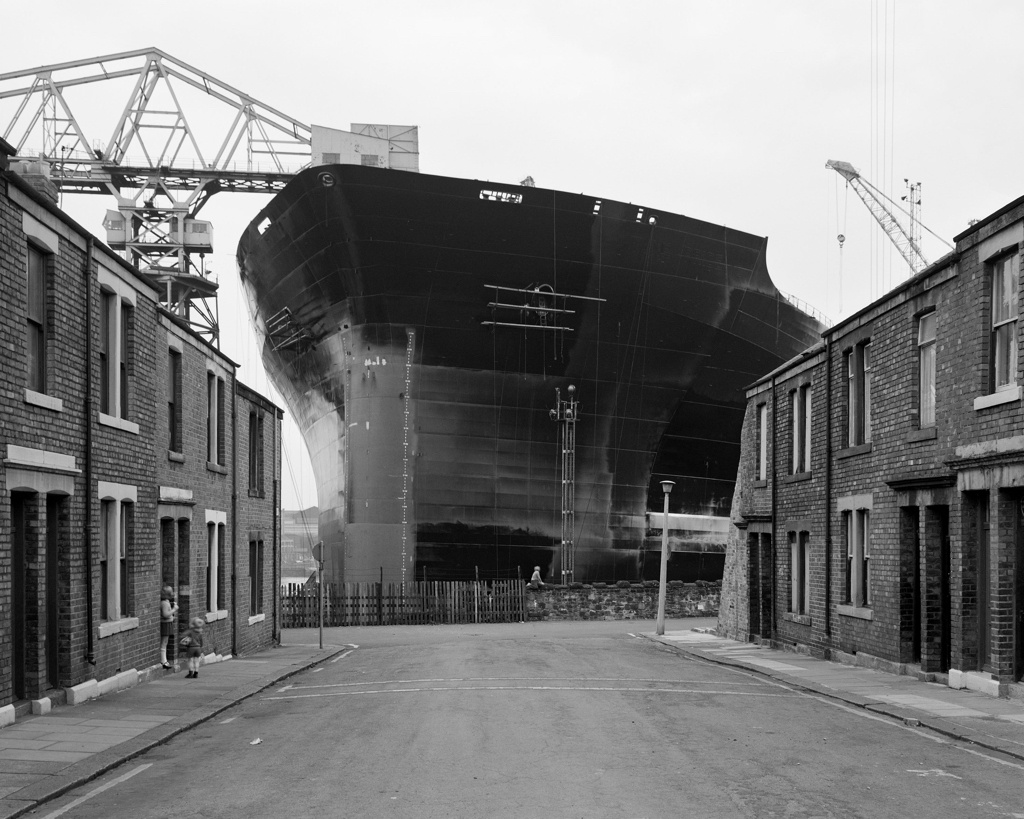This is the last article you can read this month
You can read more article this month
You can read more articles this month
Sorry your limit is up for this month
Reset on:
Please help support the Morning Star by subscribing here
The Last Ships
Laing Art Gallery, Newcastle-upon-Tyne
THE LAST Ships exhibition of photographs taken by Chris Killip over just three years captures the awe-inspiring scale and beauty of the shipbuilding industry on Tyneside in the 1970s.
It documents not only the resilience but also the desolation of working-class communities destroyed along with the industry by capitalist economic forces and government policy.

The large exhibition prints, striking and powerful, dominate the walls of the gallery. The massive, sleek black hulls of tankers like the Tyne Pride — the biggest and also one of the last ships to be built on the river — loom over the regimented terraced streets where their builders lived.
Children stand in doorways, dwarfed visually and protected economically by the vast bulk of newly built ships and the confident, energetic geometry of angular industrial cranes seem to balance and guarantee the everyday regular domesticity of workers’ houses.

Those workers stream out of the shipyards and their children play in the streets. Then, suddenly, the industry and the community are destroyed. In the photograph Wallsend Housing Looking East (1975), Tyne Pride towers over a group of young girls playing at the end of Gerald Street. Taken just two years later, Demolished Housing, Wallsend (1977) shows the same street flattened.
There are no large ships being built on the Tyne, no children playing in the streets — and no workers streaming out of shipyard gates. A few walls, standing forlornly amid the rubble, remain with spray-painted graffiti on them reading: “Don’t Vote. Prepare For Revolution.”

Killip donated the prints in honour of the Tyne’s shipyard workers and the exhibition is a fitting and just memorial to their lives, energy and strength — but it is also more than that. Killip’s photographs document the productive force of capitalism, the monumental achievements of heavy industry and the close-knit proletarian communities created alongside it.
And he also caught the bleak desolation resulting from deindustrialisation, the sudden, brutal withdrawal of capital and the historic — and ongoing — economic and social murder visited on Tyneside working-class communities by the rich and the powerful.

Thus the exhibition sums up, in a particularly graphic and visually arresting way, a process which has affected most of the British population in one way or another for the last 50 years.
It helps to explain why so many people voted against the out-of-touch ruling elites of Westminster and Brussels, causing their current political chaos.

Is it any wonder that trust in them disappeared along with the industry, the jobs and the communities they destroyed and continue to destroy?
The point is that instead of not voting and preparing for revolution, as the graffiti in one of the photos suggested, perhaps we should vote AND prepare for revolution.
The Last Ships exhibition is free and runs at the Laing Art Gallery until May 2020, opening times: laingartgallery.org.uk.









